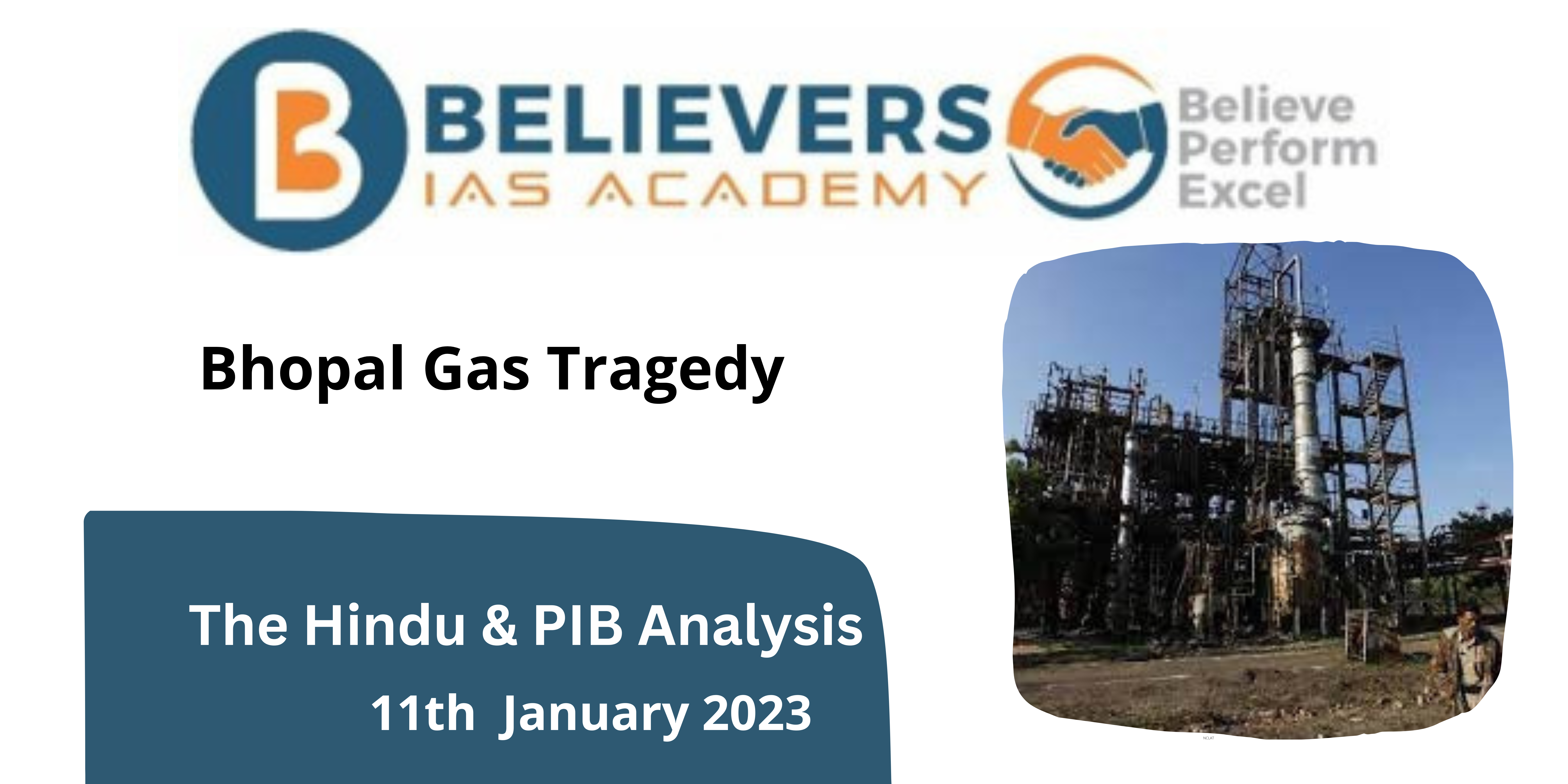Bhopal Gas Tragedy
#GS-03 Disaster Management
For Prelims
Bhopal Gas Tragedy
- Bhopal Gas Tragedy is the name given to an industrial accident which caused a gas leak at the Union Carbide India Limited (UCIL) pesticide plant in Bhopal on the night of 2 December 1984.
- The gas leak released methyl isocyanate (MIC) which led to the deaths of over 5,000 people and adversely affected the health of lakhs more.
- The gas drifted over the densely populated neighbourhoods around the plant resulting in the immediate death of thousands of people.
- The final death toll due to the gas and the resultant panic was estimated to be between 15,000 and 20,000.
- About half a million survivors suffered from long term side effects such as respiratory problems, eye irritation or blindness, muscular dystrophy from exposure to the toxic gas.
Methyl Isocyanate
- Methyl isocyanate is a colorless liquid with a a sharp odor.
- Methyl isocyanate is extremely toxic to humans and can cause Pulmonary edema even from short-term
- MIC was used by UCIL as an intermediate in the production of carbaryl.
- MIC is not known to cause cancer.
Bhopal Gas Leak Act
- The Bhopal Gas Leak Act in March 1985 to allow government of India to act as the legal representative for victims.
- It reached a settlement with the Union Carbide India Limited in 1989 for an amount of $470 million to be paid by the company.
Supreme Court laid down guidelines for how the money can be spend.
- Rs 1,00,000-3,00,000 were to be given to the family of those who died.
- Fully or partially disabled were to be given Rs 50,000-5,00,000.
- Those who had a temporary injury were to be given Rs 25,000-1,00,000.
Current Stand of the Government
- The Central Government in a curative petition in the Supreme Court, has contended that the 1989 settlement is insufficient.
- It has sought ₹7,400 crore as additional funds from the pesticide company due to presence of fresh data of more suffering caused by the incident.




